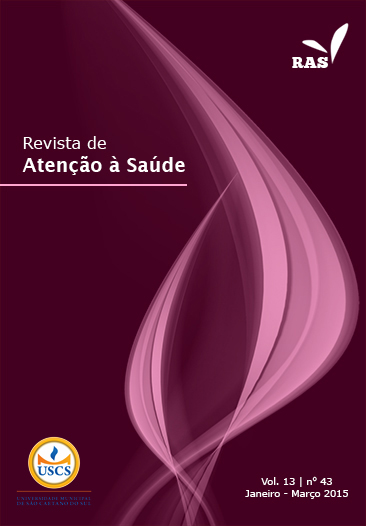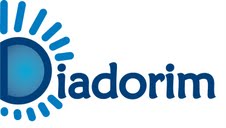Caracterização das órteses utilizadas por crianças com paralisia cerebral atendidas no centro de reabilitação física em Cascavel-PR
DOI:
https://doi.org/10.13037/rbcs.vol13n43.2446Keywords:
Fisioterapia, Órteses, paralisia cerebral, reabilitaçãoAbstract
Introdução: A paralisia cerebral é definida como um distúrbio permanente e variável do movimento e da postura, devido a uma lesão não progressiva do cérebro no período pré, peri ou pós-natal. O uso de órteses destaca-se como um recurso importante no processo de reabilitação e tem por objetivos proteger a cicatrização de estruturas, manter ou promover a amplitude de movimento de determinada articulação, substituir ou aumentar uma função, prevenir ou corrigir deformidades, oferecer repouso articular e reduzir a dor. Objetivo: Realizar um levantamento sobre os tipos e as características da utilização das órteses pelas crianças com paralisia cerebral atendidas no setor de pediatria do Centro de Reabilitação Física (CRF) da Universidade Estadual do Oeste do Paraná (Unioeste). Materiais e métodos: Foi aplicado um questionário pré-formulado a fim de obter informações pessoais, identificação do tipo de órtese utilizada em cada criança, tempo e forma de uso; o questionário foi respondido pelos pais ou responsáveis da criança. Resultados: Todas as 35 crianças avaliadas usam órteses de diferentes tipos; 60% delas fazem uso das órteses no período noturno, e 10 crianças utilizam meios auxiliares de locomoção. Conclusão: A órtese mais utilizada é a suropodálica sem articulação, e o tempo médio diário de permanência com a órtese é de 13 horas e 54 minutos, sendo que a maior parte das crianças faz uso da órtese no período noturno.
Downloads
References
1. Leite JMRS, Prado GF. Paralisia cerebral: aspectos fisioterapêuticos e clínicos. Rev Neurocienc. 2004;12(1):41-5.
2. Lepage C, Noreall L, Bernard P. Association between characteristics of locomotion and accomplishment of life habits in children with cerebral palsy. Phys Ther. 1998;78(5):458-69.
3. Shepherd RB. Fisioterapia em pediatria. 3ª ed. São Paulo: Santos; 1998. p. 224-77.
4. Kooman LA, Mooney JF, Smith BP, Walker F, Leon JM. Botulinum toxin type a neuromuscular blockade in the treatment of lower extremity spasticity in cerebral palsy: a randomized, double-blind, placebo-controlled trial. J Pediatr Orthop. 2000;20:108-15.
5. Cury VCR, Mancini MC, Melo AP, Fonseca ST, Sampaio RF, Tirado MGA. Efeitos do uso de órtese na mobilidade funcional de crianças com paralisia cerebral. Rev Bras Fisiot. 2006;10(1):67-74.
6. Trombly CA. Terapia ocupacional para disfunções físicas. 5ª ed. São Paulo: Santos; 2005.
7. Fess EE. A history of splinting: to understand the present, view the past. J Hand Ther. 2002;15(2):97-132.
8. Shorter KA, Kogler GF, Loth E, Durfee WK, Hsiao-Wecksler ET. A portable powered ankle-foot orthosis for rehabilitation. J Rehabil Res Dev. 2011;48(4):459-72.
9. Roque AH, Kanashiro MG, Kazon S, Grecco LAC, Salgado ASI, Oliveira CS. Análise do equilíbrio estático em crianças com paralisia cerebral do tipo diparesia espástica com e sem o uso de órteses. Fisiot Mov. 2012;25(2):311-6.
10. Mattacola CG, Dwyer MK, Miller AK, Uhl TL, Mccrory JL, Malone TR. Effect of orthoses on postural stability in asymptomatic subjects with rearfoot malalignment during a 6-week acclimation period. Arch Phys Med Rehab. 2007;88(5):653-60.
11. Zhao X, Xiao N, Li H, Du S. Day vs. day-night use of ankle-foot orthoses in young children with spastic diplegia: a randomized controlled study. Am J Phys Med Rehabil. 2013;92(10):905-11.
12. Naslund A, Sundelin G, Hirschfeld H. Reach performance and postural adjustments during standing in children with severe spastic diplegia using dynamic ankle-foot orthoses. J Rehabil Med. 2007;39(9):715-23.
13. Knutson LM, Clark DE. Orthotic devices for ambulation in children with cerebral palsy and myelomeningocele. Phys Ther. 1991;71:947-60.
14. Kamp FA, Lennon N, Holmes L, Dallmeijer AJ, Henley J, Miller F. Energy cost of walking in children with spastic cerebral palsy: relationship with age, body composition and mobility capacity. Gait Posture. 2014;40(1):209-14.
15. Gomes ML, Oliver FC. The practice of occupational therapy with the child population: literature review of the period
from 1999 to 2009. Rev Ter Ocup Univ. 2010;21(2):121-9.
Downloads
Published
Issue
Section
License
Copyright (c) 2015 Danilo Oliveira Silva, Marcella Ferraz Pazzinatto, Aniele Tomadon, Álvaro Mayer Ferreira, Anamaria Meireles, Jane Oliveira Silva

This work is licensed under a Creative Commons Attribution-NonCommercial-NoDerivatives 4.0 International License.
Policy Proposal for Journals offering Free Delayed Access
Authors who publish in this magazine agree to the following terms:
- Authors maintain the copyright and grant the journal the right to the first publication, with the work simultaneously licensed under a Creative Commons Attribution License after publication, allowing the sharing of the work with recognition of the authorship of the work and initial publication in this journal.
- Authors are authorized to assume additional contracts separately, for non-exclusive distribution of the version of the work published in this magazine (eg, publishing in institutional repository or as a book chapter), with the acknowledgment of the authorship and initial publication in this journal.
- Authors are allowed and encouraged to publish and distribute their work online (eg in institutional repositories or on their personal page) at any point before or during the editorial process, as this can generate productive changes, as well as increase impact and citation of the published work (See The Effect of Open Access).









